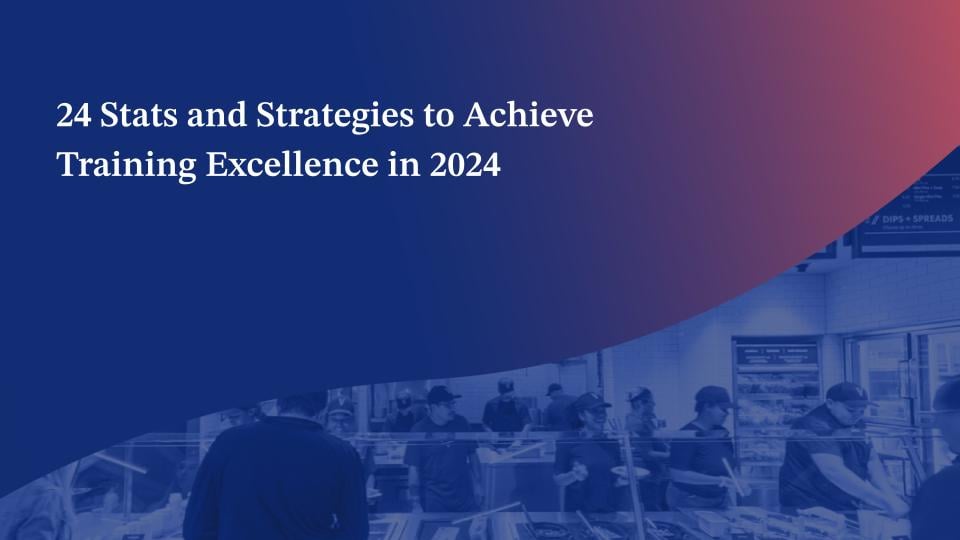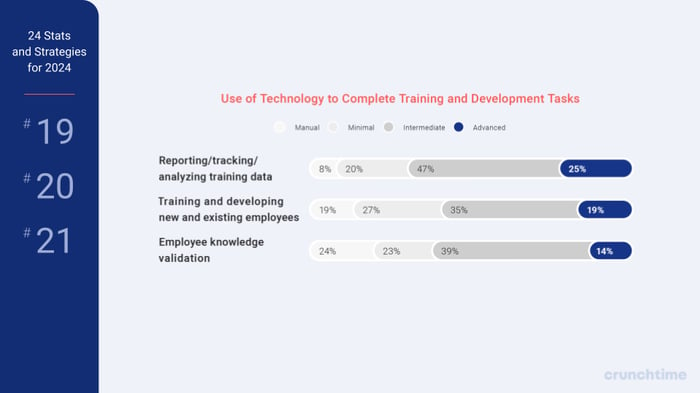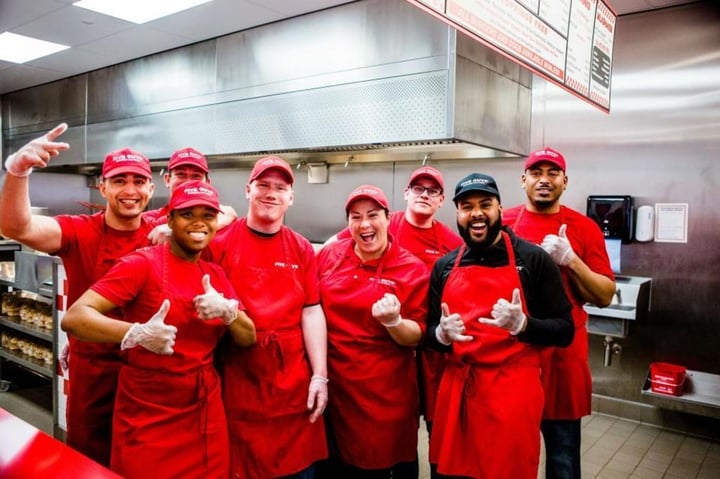
- Home
- Crunchtime Blog
- 24 Stats and Strategies to Achieve Training Excellence in 2024

24 Stats and Strategies to Achieve Training Excellence in 2024
Throughout the findings uncovered in the 2023 Restaurant Operations Report, operations leaders expressed that improvements in training and development play a big role in driving success in other parts of the business.
We’re taking a closer look at 24 training and development-specific stats and strategies from the report to help you kick off the new year by positioning your teams for unparalleled training success.
Let’s dive into the trends and impactful statistics that will shape the training landscape this year:
-
- Operators ranked employee learning/development/retention as the top driver of operational excellence impacting the success of stores.
- They also ranked “quickly and effectively rolling out new processes and initiatives in the top 3 responses, rightfully so, as training and operations execution are inherently intertwined.
- Both of these top responses reinforce how critical it is to get training and onboarding right across stores.
-
- 4.3 hours per week reporting, tracking, and analyzing training data.
- 4.7 hours per week per store validating employee knowledge.
- 7.5 hours per week per store training and developing new and existing employees.
-
- Getting new employees trained up and ready faster gets them out onto the floor as soon as possible and allows them to start using what they’ve learned to have an impact on the guest experience right away.
.png?width=700&height=394&name=24%20Stats%20and%20Strategies%20to%20Achieve%20Hospitality%20Training%20Excellence%20in%202024%20(1).png)
#8+9: This also carries across different concepts and organization sizes:
-
- FSR spends about 3 more days getting employees trained compared to QSR, but both want to reduce time to competency by ~8 days.
- Operators with 251+ locations want to reduce onboarding time by 54%.
When it comes to what respondents said about existing training programs:
#10+11:-
- 38% strongly agree that they have ongoing development programs for all levels to help improve retention/internal mobility.
- On the other hand, 69% strongly agreed that their stores maintain compliance with harassment prevention, food safety/allergen certifications, and OSHA.
-
- Only 24% strongly agreed that their training programs can be completed on a mobile device.
- In today’s digital world, it’s so important to meet today’s app-savvy workforce where they are at. Tools and apps that are as user-friendly and engaging as the ones they rely on for everything else will help attract and retain members of this younger workforce.
- Only 24% strongly agreed that their training programs can be completed on a mobile device.
-
- 69% strongly agreed that their stores enforce on-site training for hourly employees.
- 69% strongly agreed that their stores enforce on-site training for hourly employees.
-
- Only 38% strongly agree that franchisees within their brand take responsibility for driving their own training success.
- 41% strongly agree that stores keep employees engaged during training and effectively validate their knowledge.
- The data also revealed that smaller organizations are more effective at knowledge validation compared to larger organizations.
- The data also revealed that smaller organizations are more effective at knowledge validation compared to larger organizations.
-
- Focus on training/development to improve retention.
- Focus on employee incentives to improve retention.
- Cross-training employees.
-
- 25% are advanced in use of technology for reporting/tracking/analyzing training data.
- 19% are advanced in use of technology for training and developing new and existing employees.
- Only 14% are advanced in use of technology for employee knowledge validation.
- The data also revealed that larger organizations with minimal or no tech see that they could be doing better in terms of knowledge validation.

-
- 53% of respondents plan to invest in more training technology and programs in the next 12-18 months.
- 56% of FSR and 48% of QSR are adding or upgrading training tech, with smaller organizations leading the pack with 60% of 10-20 in the market.
#24: Last but not least, the final stat: Across all segments and org sizes, training was the top response when respondents were asked how they plan to reduce food costs in the next 12-18 months.
The emphasis and importance that operators put on training and development proves the impact of these important initiatives.
Watch a recording of the webinar where these findings were shared, including perspectives from A&W Restaurants and Silver Diner Development. To uncover all of the findings, access the full 2023 Restaurant Operations Report.
Share this post
Related

.png?length=720&name=MicrosoftTeams-image%20(34).png)
DiscoverLink Products Rebranded as Part of Crunchtime’s Talent Development Solution


.png?width=700&height=427&name=2023-Restaurant-Ops-Report-Thumb-LP-@2x%20(1).png)
